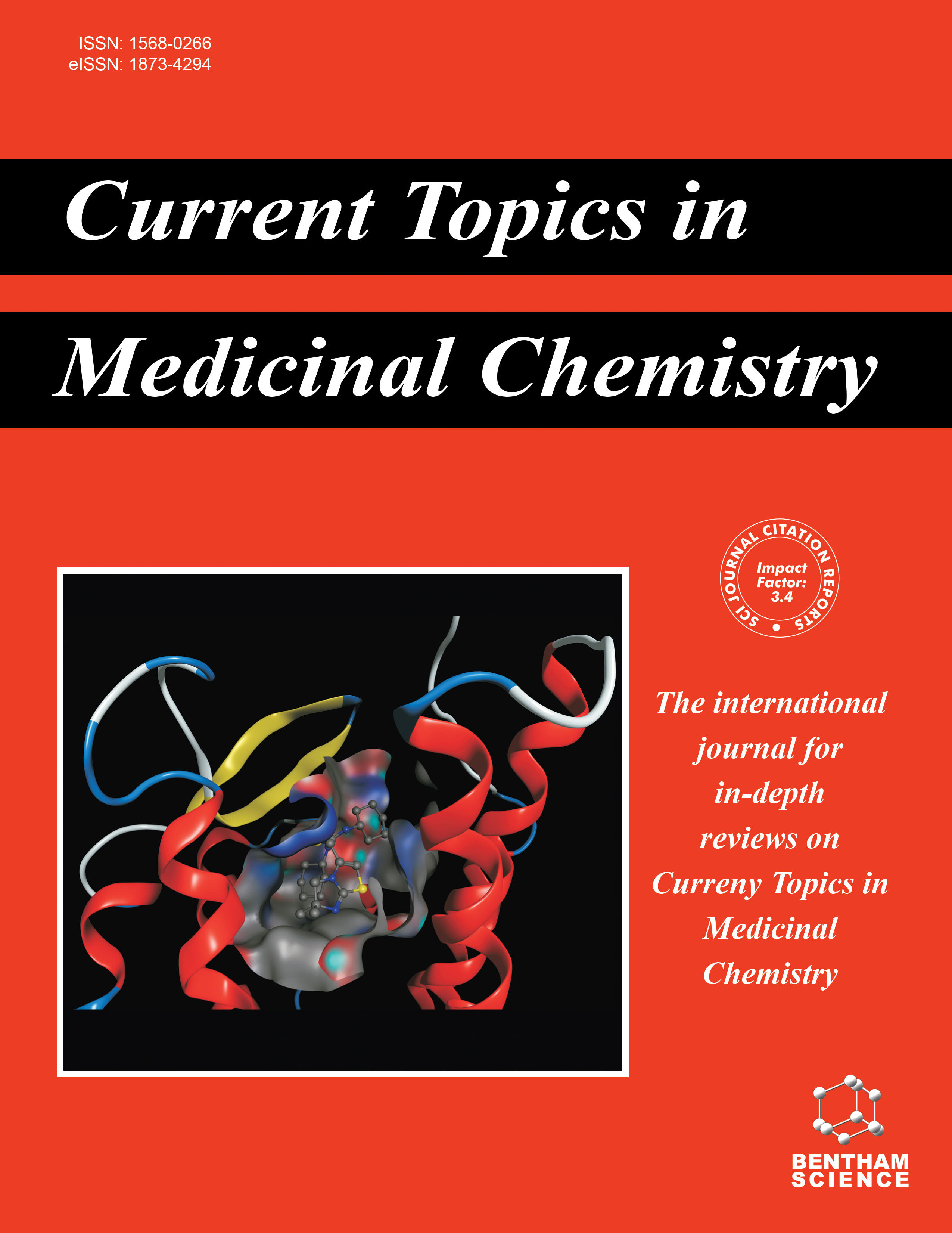- Home
- A-Z Publications
- Current Topics in Medicinal Chemistry
- Previous Issues
- Volume 4, Issue 16, 2004
Current Topics in Medicinal Chemistry - Volume 4, Issue 16, 2004
Volume 4, Issue 16, 2004
-
-
Bridging the Gap Between Structural Bioinformatics and Receptor Research: The Membrane-embedded, Ligand-gated, P2X Glycoprotein Receptor
More LessAuthors: Peter P. Mager, Anje Weber and Peter IllesMotivation: No details on P2X receptor architecture had been known at the atomic resolution level. Using comparative homology-based molecular modelling and threading, it was attempted to predict the three-dimensional structure of P2X receptors. This prediction could not be carried out, however, because important properties of the P2X family differ considerably from that of the potential template proteins. This paper rev Read More
-
-
-
Agonists and Antagonists Acting at P2X7 Receptor
More LessAuthors: Pier G. Baraldi, Francesco Di Virgilio and Romeo RomagnoliThe P2X7 receptor is involved in several processes relevant to inflammation (cytokine release, NO generation, killing of intracellular pathogens, cytotoxicity), thus, it may be an appealing target for pharmacological intervention. The characterisation of native and recombinant P2X7 receptor continues to be hindered by the lack of specific and subtypeselective agonists and antagonists. BzATP is currently the most potent agoni Read More
-
-
-
Dissecting Individual Current Components of Co-expressed Human P2X1 and P2X7 Receptors
More LessAuthors: Christian Seyffert, Gunther Schmalzing and Fritz MarkwardtPurinergic P2X1 and P2X7 receptors are co-expressed in several cell types such as lymphocytes or epithelial cells. Here we examined whether these two P2X subtypes interact with each other in a manner that results in a mutual alteration of their electrophysiologic behaviour. Furthermore, since specific pharmacological tools are needed to assign distinct effects to a particular receptor subtype in native cells, we assessed a s Read More
-
-
-
Pharmacogenetics of the Cytochromes P450
More LessBy Ann K. DalyThe cytochromes P450 are a family of heme-containing proteins with a major role in the oxidation of both xenobiotics (including prescribed drugs) and endogenous compounds. There are at least 57 human P450s (termed isoforms) which are all encoded by separate genes but only 10 of these contribute to drug metabolism, with the major contribution coming from only 3 isoforms, CYP3A4, CYP2D6 and CYP2C9. It is now well re Read More
-
-
-
Induction of Cytochromes P450
More LessThe induction of cytochromes P450 (CYPs) has been appreciated for some time but an understanding of the mechanisms involved has been poorly understood until recently. The discovery of the role of nuclear receptors such as the pregnane X receptor (PXR) and the constitutive androstane receptor (CAR) has provided a major trigger for research in this area. This work has provided an explanation for species differences in h Read More
-
-
-
Cytochromes P450 in the Bioactivation of Chemicals
More LessAuthors: Costas Ioannides and David F. V. LewisThe initial view that the cytochrome P450 enzyme system functions simply in the deactivation of xenobiotics is anachronistic on the face of mounting evidence that this system can also transform many innocuous chemicals to toxic products. However, not all xenobiotic-metabolising cytochrome P450 subfamilies show the same propensity in the bioactivation of chemicals. For example, the CYP2C, 2B and 2D subfamili Read More
-
-
-
Crystallization of Cytochromes P450 and Substrate-Enzyme Interactions
More LessAuthors: Huiying Li and Thomas L. PoulosOur understanding of structure-function relationships have made considerable advances owing to the increasing number of new P450 crystal structures. This is especially true with mammalian P450s. As always, the main bottleneck in a structure determination project is crystallization. While the crystallization techniques used for P450 crystal growth are not much different from that utilized for other proteins, special prot Read More
-
-
-
In Silico Methods for Predicting Ligand Binding Determinants of Cytochromes P450
More LessAuthors: Marcel J. de Groot, Stewart B. Kirton and Michael J. SutcliffeA large number of computational methodologies have been used to predict, and thus help explain, the metabolism catalysed by the enzymes of the cytochrome P450 superfamily (P450s). A summary of the methodologies and resulting models is presented. This shows that investigations so far have focused on just a few of the many P450s, mainly those that are involved in drug metabolism. The models have evolved from simpl Read More
-
-
-
Corrigendum
More LessJ. Balzarini, Current Status of the Non-nucleoside Reverse Transcriptase Inhibitors of Human Immunodeficiency Virus Type 1, Curr. Top. Med. Chem. 2004, 4, 921-944. The correct generic name for TMC125 listed in the abstract, Table 1 and Figure 1 is etravirine, and not dapivirine as listed.
-
Volumes & issues
-
Volume 25 (2025)
-
Volume 24 (2024)
-
Volume 23 (2023)
-
Volume 22 (2022)
-
Volume 21 (2021)
-
Volume 20 (2020)
-
Volume 19 (2019)
-
Volume 18 (2018)
-
Volume 17 (2017)
-
Volume 16 (2016)
-
Volume 15 (2015)
-
Volume 14 (2014)
-
Volume 13 (2013)
-
Volume 12 (2012)
-
Volume 11 (2011)
-
Volume 10 (2010)
-
Volume 9 (2009)
-
Volume 8 (2008)
-
Volume 7 (2007)
-
Volume 6 (2006)
-
Volume 5 (2005)
-
Volume 4 (2004)
-
Volume 3 (2003)
-
Volume 2 (2002)
-
Volume 1 (2001)
Most Read This Month
Article
content/journals/ctmc
Journal
10
5
false
en


